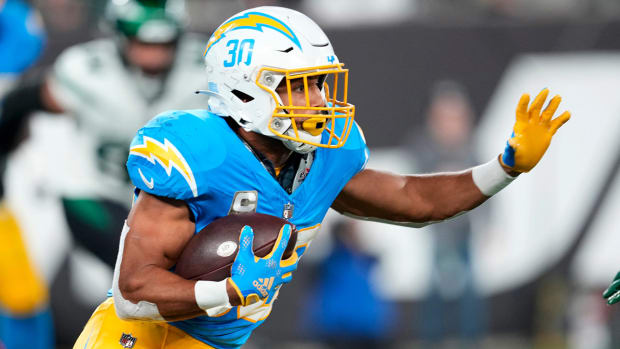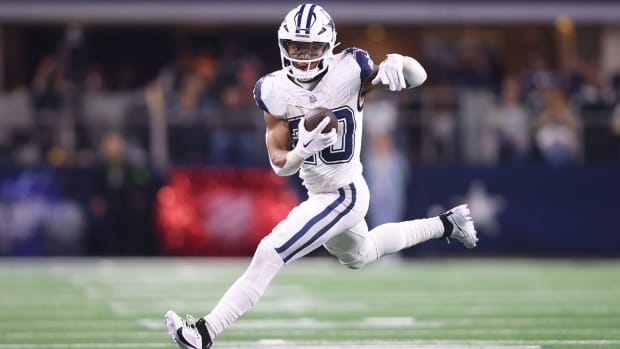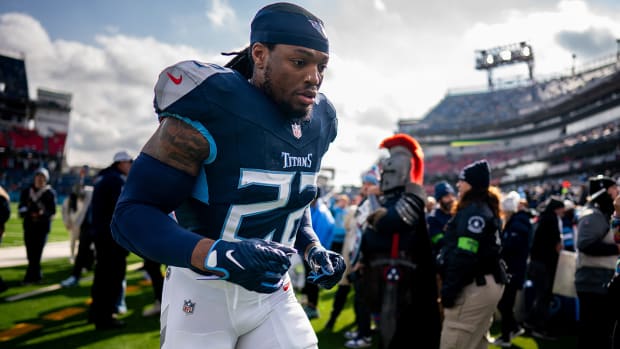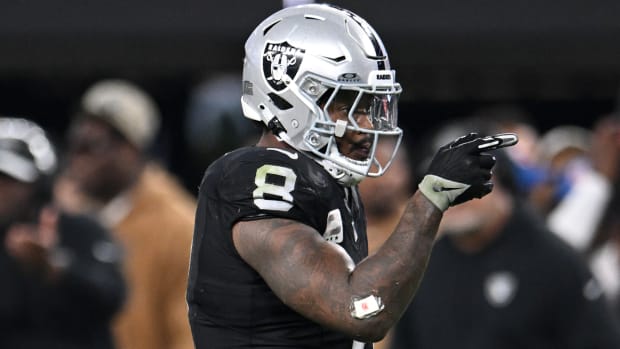DFS preview: Which stats are most important for daily fantasy?
Welcome to DFS week here at SI.com. We’ve spent the balance of the winter and early spring getting you ready for your season-long drafts, and we’ll spend this last week before the regular season begins giving you a DFS primer so you’re ready for both forms of fantasy baseball on Opening Day.
Before we dive into any specifics on position, we’ll first provide a 30,000-foot overview of the daily game. There’s a reason why baseball launched the analytics movement—it’s a sport made up almost entirely of individual matchups, making it very easy to isolate for every single player’s performance. That results in a veritable breeding ground for new statistics.
The alphabet soup of WAR, xFIP, wOBA and BABIP might be confusing, but some of them are wonderfully predictive and incredibly important for the DFS player, while others can be ignored. We’ll spell out which are which for you, in more traditional fashion.
• SI.com’s complete 2016 fantasy baseball draft kit | Top 250 rankings
Splits
What are they? Batting vs. righties or lefties. Slugging at home. OBP in June. Anything like that is a split.
Do they matter? Absolutely
Why? Splits are arguably the most important stats to consult when building a DFS lineup. This is where you can find a matchup advantage for a hitter or pitcher that you can exploit.
Burning questions: Can owners trust David Ortiz for another season?
For example: last season, Chris Young hit .252/.320/.453 with 14 homers and 42 RBI. That’s fine for a fourth outfielder, but not something that really catches your eye. When a left-handed starter was on the mound, however, he turned into Mike Trout. In 175 plate appearances against southpaws, Young slashed .327/.397/.575 with seven of his homers and 24 RBI. That made Young a great, cheap option whenever the Yankees faced a lefty.
You’ll be able to find split-driven bargains in myriad ways. Some guys are great with the platoon advantage. Some guys are great at home. Some pitchers dominate heavy right-handed lineups. There’s no shortage, but you have to be willing to look through splits to find the right matchups. Always make sure you’re consulting split data as you are crafting your lineups.
wOBA
What is it? Weighted on-base average
Does it matter? Yes
Why? Weighted on-base average acknowledges a simple fact. A home run is better than a triple, which is better than a double, which is better than a single. A double might drive in a guy from first base. A home run definitely will. A single won’t.
2016 Fantasy Baseball Mock Draft
What wOBA does is take everything outcome produced by a hitter, weighted for its ability to produce runs, and create a number that looks like an OBP. In fact, wOBA is on the same scale as OBP, so it’s incredibly easy to use. If a player’s wOBA would be a strong OBP, then it is also a strong wOBA.
In essence, wOBA is the best catch-all stat at our disposal to quantify offensive performance. It captures how frequently a player gets on base, as well as how often he hits for extra bases. It is—in the simplest description—a better, more accurate version of on-base plus slugging, or OPS. Want to know which hitters are having the best seasons? Make sure you first consult wOBA.
xFIP
What is it? Expected fielding independent pitching
Does it matter? Yes
Why? We should all understand that a lot of events are outside a pitcher’s control once the ball is in play. His second baseman might have bad range. His left fielder could have taken a bad route or gotten a bad jump. Suddenly, a routine grounder or a lazy fly ball turns into a hit. It’s no wonder there’s so much noise in ERA and WHIP. A pitcher isn’t going to luck his way into good rates, but bad luck could make him appear, at least cosmetically to be worse than he actually is. FIP and, more importantly, xFIP, take care of that.
Rather than the actual results on a ball in play, FIP and xFIP assume league-average results. As far as FIP and xFIP are concerned, every pitcher in the majors has the exact same defense behind him. Both metrics are on an ERA scale to make them readily understandable. We prefer the expected version because it, too, assumes a league-average HR/FB ratio. That’s a rate that tends to vary from season to season for most pitchers, meaning we regularly see outliers when looking at HR/FB ratio. That, too, needs to be normalized to accurately reflect how well a pitcher is performing with respect to the things he can actually control.
Batter vs. pitcher
What is it? Historical results for a specific batter against a specific pitcher
Does it matter? No
Why not? I don’t take this as far as the anti-BvP zealots, but I do agree with their general premise. Baseball requires a large sample size before we can really take numbers at face value. One oft-cited study by Baseball Prospectus writer Russell Carleton found that batting average doesn’t stabilize until 910 at-bats. For slugging percentage, it’s 320 at-bats, while for OBP, it’s 460 plate appearances. Of course, no batter or pitcher is going to face off with a single counterpart that many times.
Fantasy baseball preview: Players to draft or avoid based on ADP
When you hear a hitter is 3-for-6 against a pitcher, ignore it. When you hear someone is 8-for-12 against that day’s starting pitcher, forget about it. When you learn that a pitcher has held the opposing team’s cleanup man to 1-for-10 with four strikeouts, nod politely and move on. The typical BvP sample size is simply too small to be predictive.
I will, however, make an exception if the results are overwhelming and based on at least 30 plate appearances. Even though overall rates are nowhere near stabilizing, that’s enough for me to believe that a hitter sees the ball well coming out of a pitcher’s hand, or a pitcher has a hitter’s number for a substantive reason.
ISO
What is it?Isolated slugging percentage
Does it matter? Yes
Why?No one would ever confuse Jose Altuve with a power hitter. Did you know, however, that he has had a slugging percentage of .453 or better each of the last two seasons? Last year, his .459 slugging percentage was better than that of Curtis Granderson (.457), Justin Upton (.454) and Kyle Seager (.451), all of whom hit 11 more homers than he did. Obviously, those three players have more power than Altuve, but the diminutive second basemen slugged better than they did in 2015. That’s why we need a stat like ISO
Fantasy baseball draft strategies: Don’t sleep on 1B, more
ISO is simply slugging percentage minus batting average, which eliminates singles from the former rate. ISO seeks to determine how frequently a player hits for extra bases. Going back to our previous comparisons, you can see how ISO pushes power to the fore. Altuve had a .146 ISO last season. Granderson’s was .198, Upton’s was .203 and Seager’s was .185.
If you’re looking for the best power hitters in the business who also don’t hurt your bottom-line average and OBP numbers, ISO is the stat for you.
BABIP
What is it? Batting average on balls in play
Does it matter?Not really for DFS purposes
Why not? Just like pitchers, hitters lose a lot of control of the outcome once they put the ball in play. Line drives go right at people. Bloopers find holes. That’s baseball.
BABIP is great, because it basically tells us how much luck, or lack thereof, a player has. League-average BABIP changes from season to season, but it’s typically in the low .300s. If a player is far off that mark, he’s either very lucky, or very unlucky, depending on the direction in which he has fluctuated.
The reason why it’s not really useful for DFS is that it’s not very predictive. Yes, if a player’s BABIP is at, say, .280, you can probably expect more of his balls in play to find holes in the future. Still, though, that’s not predictive to the point that you’ll be able to use it in your DFS research. It’s a good stat to know and understand, but not one that should be included in your DFS decisions.




































